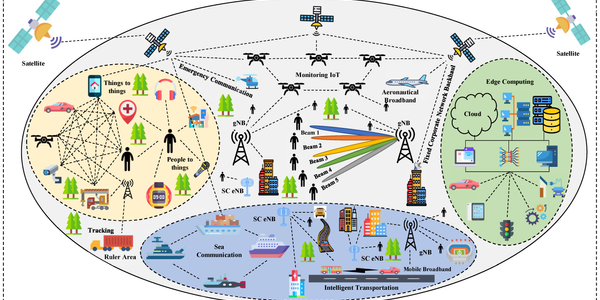The rapid evolution of Over-The-Top (OTT) media services, powered by the advent of 5G wireless technology, is set to revolutionize the entertainment industry. This seismic shift is characterized by its ability to deliver faster, more reliable internet speeds, paving the way for a new era of digital content consumption.
5G technology, the fifth generation of cellular network technology, heralds significant improvements over its predecessor, 4G. It promises to deliver download speeds of up to 10 gigabits per second, a stark contrast to the maximum of 1 gigabit per second offered by 4G. This enhancement in speed and the accompanying reduction in latency – which refers to the delay before a transfer of data begins following an instruction for its transfer – are pivotal for OTT platforms like Netflix, Hulu, Amazon Prime, and others striving to deliver a seamless streaming experience.
The Impact of 5G on OTT Platforms
For OTT platforms, the integration of 5G technology means more than just faster streaming capabilities. It represents an opportunity to rethink and enhance the way content is delivered and consumed. High-definition (HD) and ultra-high-definition (UHD) content, which require significant bandwidth for flawless streaming, can be delivered effortlessly, without the perennial issues of buffering or poor quality during peak times.
Consider the example of streaming a live sports event in 4K resolution. With 4G, viewers might experience delays or reduced video quality, especially in areas with high network traffic. However, with 5G, the same content can be streamed seamlessly, offering viewers an immersive experience as if they were watching the game from the stands.
Moreover, the low latency of 5G opens new horizons for OTT platforms to explore and integrate augmented reality (AR) and virtual reality (VR) into their content. These technologies can transform how viewers interact with media, offering immersive experiences that were once considered futuristic. For instance, viewers could potentially explore a scene from their favorite series in VR, walking through the virtual set or interacting with objects, enhancing their engagement with the content.
Challenges and Considerations
The integration of 5G into OTT services, however, is not without its challenges. OTT providers must navigate the complexities of investing in new network infrastructure capable of supporting 5G speeds and protocols. Additionally, adapting existing content to leverage the capabilities of 5G, such as creating VR or AR-enhanced content, requires significant investment in technology and creative development.
Furthermore, the increased connectivity and data throughput associated with 5G networks shine a spotlight on concerns over data privacy and cybersecurity. OTT providers must ensure robust security measures are in place to protect user data from potential breaches and maintain trust.
Conclusion
In conclusion, the synergy between 5G and OTT services is poised to redefine how audiences worldwide access and engage with digital content. Despite the challenges, the potential for enhanced user experiences, coupled with the opportunity to explore new forms of content delivery, positions 5G as a transformative force in the OTT landscape. As technology continues to evolve, both OTT providers and consumers stand on the brink of a thrilling new chapter in digital entertainment.
